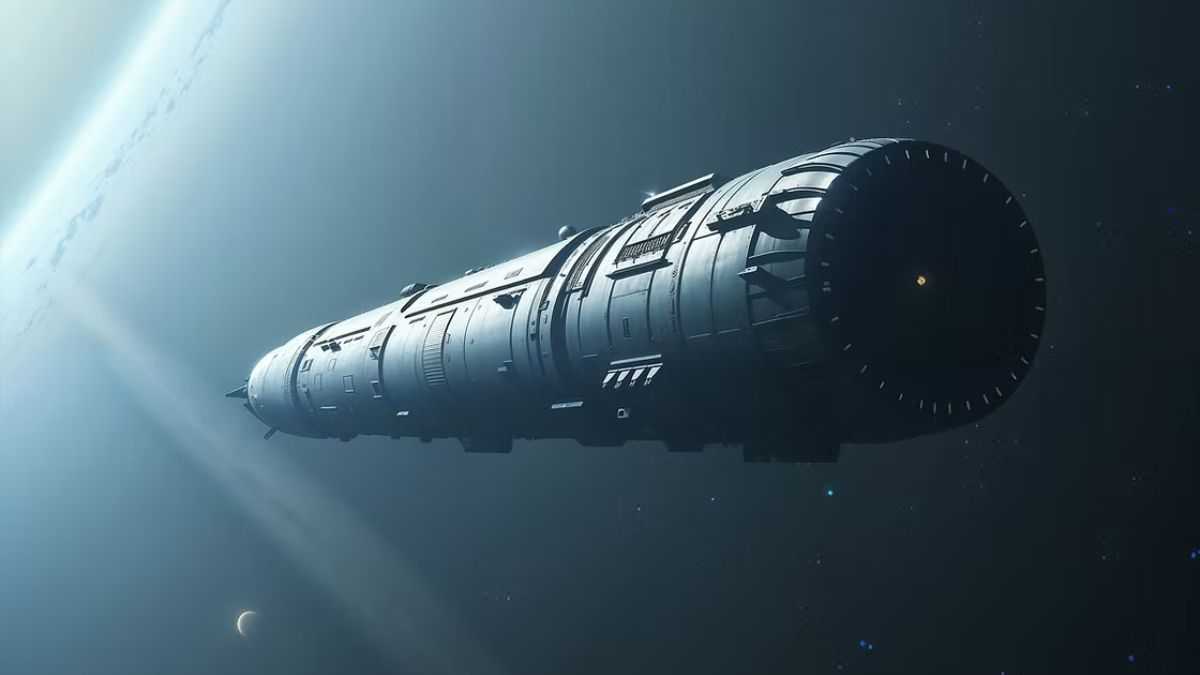Humanism
How Did Language Begin? The Great Mystery of Human Communication
25 December 2025

58 kilometers long, 400 years of travel, and thousands of people on board. That’s the vision behind Chrysalis—a spacefaring city designed to take humanity to the Sun’s nearest neighbor. The project, created by Italian engineers, suggests we could set out on an interstellar journey within this century. The only question: who would reach the destination, and who would be born along the way?
Cosmic distances are almost beyond human comprehension. There are hundreds of millions of stars in our galaxy, and the nearest beyond the Sun—the three stars of the Alpha Centauri system—lie 4.3 light years from Earth. That’s the distance light, the fastest thing we know, travels in over four years. Put another way: it’s 40 trillion kilometers. That’s the length of the journey to Alpha Centauri.
Science fiction often offers solutions like warp drives and hyperspace leaps, but faster-than-light travel is unlikely to happen soon. Still, that doesn’t mean reaching neighboring stars is impossible. A more realistic option is a generation ship: a vast vessel carrying communities for centuries, arriving at Alpha Centauri after 400 years.
This is the idea behind Chrysalis, the starship concept that won the Project Hyperion Design Competition. Competing engineering teams were tasked with designing a vessel capable of interstellar travel. The winning design, by a five-person Italian team, imagines Chrysalis as a city-ship where generations would live and die before reaching their destination.
You might like to read: Mysterious Signals from Space. We Know What’s Behind the Bursts
Imagine being chosen as one of Chrysalis’s passengers. You pack your bags and prepare for a voyage into the unknown. But the plan suggests that the first selected generations wouldn’t board the ship at all.
According to the mission design, the first two generations would train for life in space while still on Earth. A base in Antarctica would serve as their isolated home for 70–80 years. Only those born during this stage might actually board the ship.
Meanwhile, Chrysalis itself would be built piece by piece in orbit between Earth and the Moon. Its immense size requires assembly in space. The ship would stretch 58 kilometers long with a cigar-like diameter of 6 kilometers. Construction would take 20–25 years. To simulate gravity, the entire ship would rotate around its axis.
Now imagine you were born in the Antarctic training colony and launched to Chrysalis in orbit. Within months, its engines would ignite, pushing the ship free of Earth’s gravity and into interstellar space.
Life on board would be structured across five concentric layers. The outermost would house artificial farmland, producing food in controlled ecosystems—including replicas of tropical rainforests. The next layer would contain community spaces: schools, hospitals, libraries, and parks. Deeper inside, families would live in residential quarters. Below that, industry and services would sustain the ship: factories, medicine production, waste processing. The fifth layer would store essential supplies. At the core, docking bays would house shuttles—ready to land passengers on a new world.
Once on board, your tasks would be simple: work and reproduce. Your children would grow up to do the same. After 400 years, descendants of the first passengers would finally reach Alpha Centauri. The Chrysalis population would be maintained at about 1,500 people, though the ship could accommodate up to 2,400 if needed.
Community governance would be supported by artificial intelligence. According to the designers, this system would “increase the resilience of the social order, ensure better knowledge transfer across generations, and deepen understanding of the ship’s complex dynamics.”
After four centuries, Chrysalis would enter orbit around Proxima Centauri b, a planet roughly Earth-sized and possibly habitable. Colonists and their supplies would transfer into shuttles, descending slowly to the surface. Humanity would begin interstellar colonization. But who would be the first to set foot on a new world? If Chrysalis ever launches, even its earliest passengers may never know.
Read the original article: Ten statek zabierze nas do gwiazd. Czy wsiadłbyś na jego pokład?

Truth & Goodness
24 December 2025


Zmień tryb na ciemny